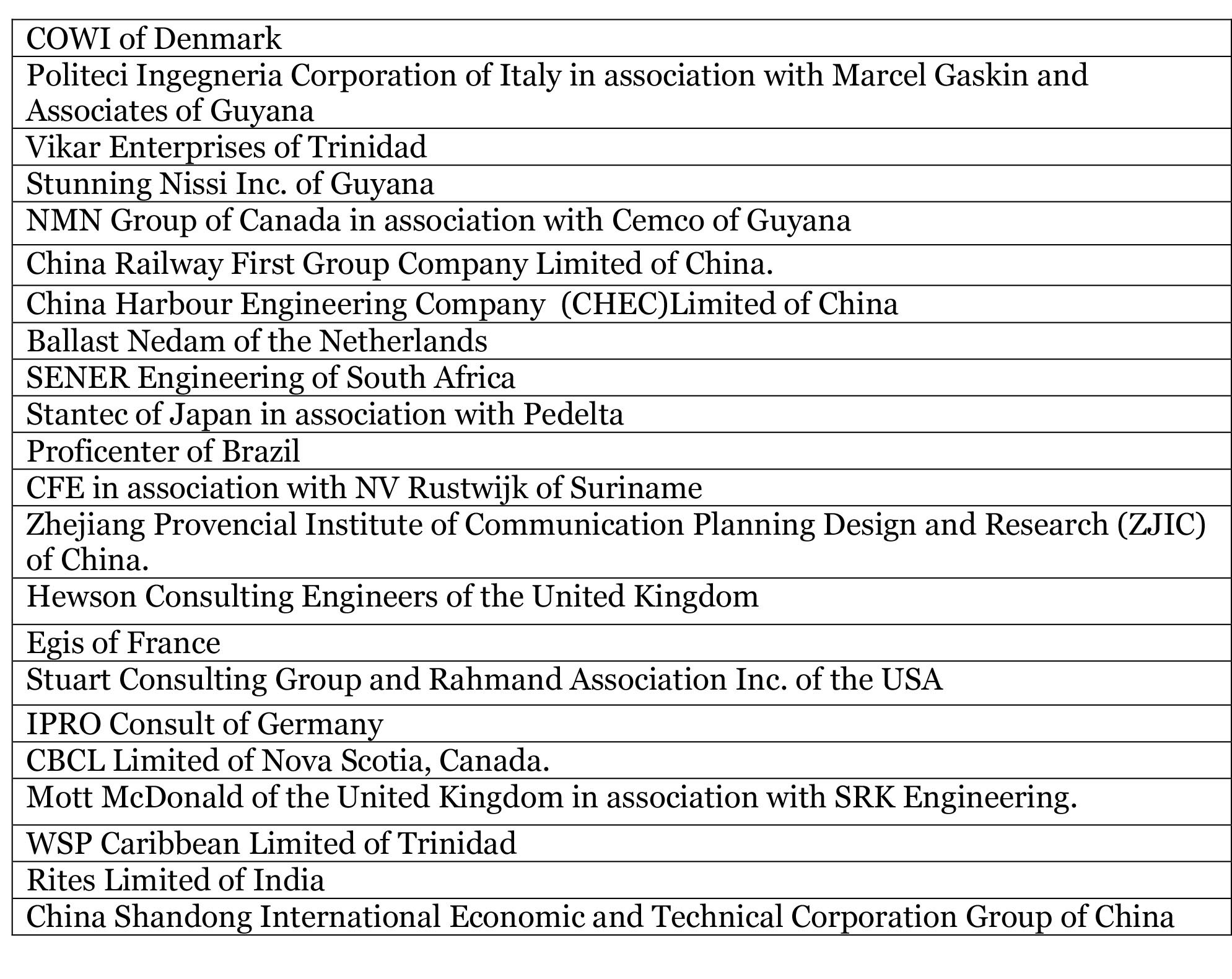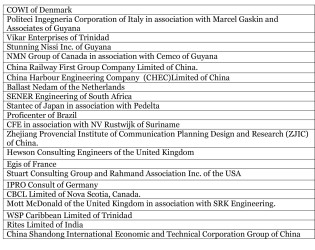Twenty-two companies from around the world have submitted bids to conduct a feasibility study and design for the new bridge across the Demerara River.
The bids were opened yesterday at the offices of the National Procurement and Tender Administration Board (NPTAB), located in the Ministry of Finance compound, at Main and Urquhart Streets, Georgetown.
Minister within the Ministry of Infrastructure Annette Ferguson told Stabroek News that the study is expected to last nine months. She said that three connections are being examined for the construction of the new bridge.
They are: between Houston, East Bank Demerara (EBD) and Versailles, West Bank Demerara (WBD); between Peter’s Hall, EBD and Schoonord, on the WBD; and between New Hope, EBD and at Laurentia Catherina, WBD.
The bridge must have a navigational clearance of 100 metres wide with navigational aids, an air draft of 50 metres (vertical clearance), adequate marine collection protection at the navigating channels and an estimated length of 2,250 meters.
Government stipulated that the companies that bid must provide information indicating that they are qualified to perform the services with evidence in brochures, description of similar assignments, experience in similar conditions, and availability of appropriate skills, among other criteria.
The consultant may also associate with another company to enhance their qualification.
There have long been calls for a new bridge across the Demerara River as the current structure has had mechanical problems. It has been pointed out that the growth in traffic has taken a toll on the bridge, which opened in 1978 and has been the major artery linking Georgetown to the West Demerara. The floating steel structure, which measures 6,074 feet (1851.4 metres), spans the Demerara River from the village of Peter’s Hall on the eastern side to Plantation Meer-Zorgen on the western end.
A prefeasibility study was done under the People’s Progressive Party/ Civic (PPP/C) administration in 2013 and it had found that the current bridge undergoes an estimated US$2M in capital repairs annually.
According to that study, an average of 13,781 vehicles use the current bridge daily and the structure has passed its useful life and presents not only challenging operations and maintenance demands for the Demerara Harbour Bridge Company, but also impedes improved mobility between the east and west banks of Demerara.
Government says that the new study will be more detailed and will incorporate preliminary designs of proposed bridge structures, approach roads, impacts and desirable considerations not covered in the previous pre-feasibility study.
It will also include an economic analysis with exogenous costs and benefits and a financial analysis that addresses the concerns of project financing as well as a detailed Environment and Social Impact Assessment (ESIA).
Earlier this year, engineer Joseph Holder said that the harbour bridge can continue to operate indefinitely. He is a former project manager for the bridge including during its construction.
In relation to the bridge’s design life, Holder, in a collection of papers on the bridge’s history, argues that there is no document signed by any engineer who took part in the design of the harbour bridge that states its design life. It is not the practise of bridge designers to state a design life for their creations, he said, while adding that such a statement is meaningless.
The 22 companies that submitted bids are:







